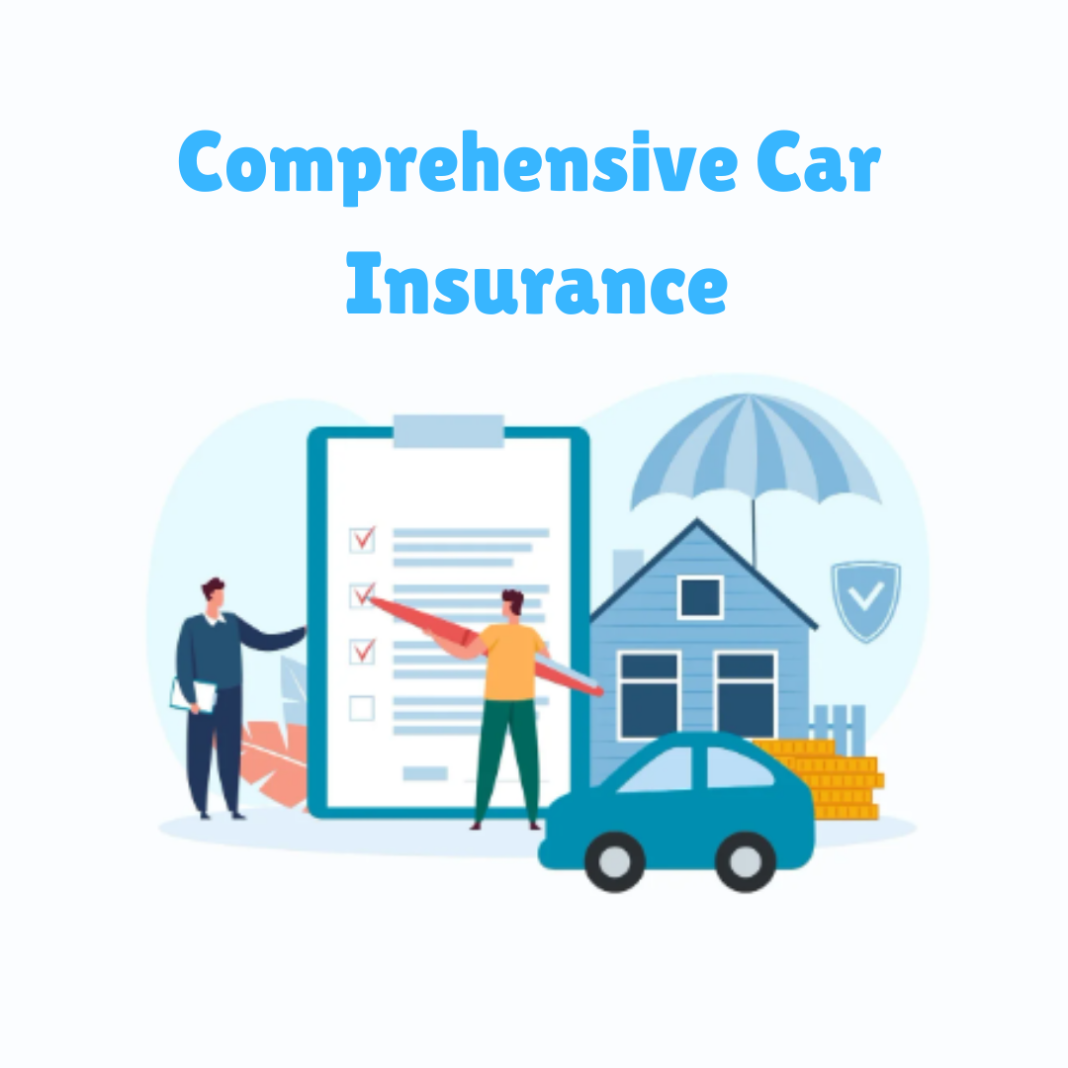Subscription required
When it comes to safeguarding your vehicle, comprehensive car insurance stands out as one of the most extensive options available. As a car owner, understanding the nuances of comprehensive coverage is crucial for making informed decisions about your vehicle’s protection. This type of insurance goes beyond basic coverage to include a wide range of protections, making it an attractive option for those who want to ensure their car is shielded from a variety of risks.
Comprehensive car insurance covers damages not typically included in liability or collision insurance, such as theft, vandalism, and natural disasters. However, with so many providers and policies available, choosing the right comprehensive insurance can be a daunting task. To make an informed decision, it is essential to not only understand what comprehensive coverage entails but also to compare different policies to find the best fit for your needs and budget.
In this article, we will delve into what comprehensive car insurance covers compared to other types of insurance. We will also provide a detailed comparison of various insurance policies to help you find the optimal coverage for your vehicle. Whether you’re a new car owner or reviewing your existing insurance, this guide aims to provide clarity and assist you in navigating the complexities of car insurance.
What is Comprehensive Car Insurance?
Comprehensive car insurance is a type of coverage designed to protect your vehicle from a broad range of risks that go beyond the scope of basic liability and collision insurance. Unlike liability insurance, which covers damages to other people and property if you are at fault in an accident, and collision insurance, which covers damage to your own vehicle from collisions, comprehensive insurance offers coverage for a variety of non-collision-related incidents.
Definition of Comprehensive Car Insurance
Comprehensive car insurance, also known as “other than collision” coverage, provides financial protection for damages to your vehicle caused by events other than a car crash. This includes incidents such as:
- Theft: Protection against loss if your vehicle is stolen.
- Vandalism: Coverage for damage resulting from deliberate acts of vandalism.
- Natural Disasters: Protection from damages caused by events like hurricanes, floods, or earthquakes.
- Animal Collisions: Coverage for damages resulting from collisions with animals such as deer.
- Glass Damage: Repair or replacement of damaged windshields and windows.

Comparison with Other Types of Car Insurance
To fully appreciate the scope of comprehensive car insurance, it’s helpful to compare it with other standard types of car insurance:
- Liability Insurance:
- Coverage Provided: Liability insurance covers bodily injury and property damage that you may cause to others in an accident. It does not cover damages to your own vehicle.
- Typical Scenarios: If you are found at fault in a car accident, liability insurance pays for the medical expenses of other drivers or pedestrians and repairs to their vehicles.
- Collision Insurance:
- Coverage Provided: Collision insurance covers damage to your own vehicle resulting from a collision, regardless of fault. This includes accidents with other vehicles or objects.
- Typical Scenarios: If you hit another car, a tree, or a guardrail, collision insurance helps pay for repairs or replacement of your vehicle.
Key Features and Benefits
The primary benefit of comprehensive car insurance is its broad scope of coverage. By providing protection against a variety of potential risks, comprehensive insurance ensures that you are not left with significant out-of-pocket expenses for damages that are beyond your control. It is especially valuable for those who live in areas prone to natural disasters or high crime rates, or for owners of high-value vehicles.
In summary, comprehensive car insurance offers an extensive level of protection, complementing other types of insurance by covering damages and losses not related to collisions. Understanding the differences and benefits of comprehensive coverage is the first step in determining if it aligns with your needs and financial situation.
Coverage Details of Comprehensive Car Insurance
Comprehensive car insurance provides protection for a wide range of scenarios that could damage your vehicle. Understanding these details is crucial for assessing whether this type of insurance meets your needs. Here’s a breakdown of the key coverage areas under a comprehensive policy:
Protection Against Theft
How It Works: Comprehensive car insurance covers the loss of your vehicle if it is stolen. This protection includes the vehicle’s value at the time of the theft, minus any deductible specified in your policy.
Examples of Claims: If your car is stolen from a parking lot or your driveway, comprehensive insurance can help cover the cost of replacing it. It may also cover any personal belongings inside the vehicle, depending on the policy terms.

Damage from Natural Disasters
Types of Natural Disasters Covered: Comprehensive insurance typically covers damages from natural events such as:
- Hurricanes
- Floods
- Tornadoes
- Earthquakes
- Wildfires
Claims Process and Examples: If a hurricane causes damage to your vehicle, such as flooding or wind damage, comprehensive insurance would help cover repairs or replacement. Documentation and proof of damage are required for the claims process.
Vandalism Coverage
Examples of Vandalism Covered: Comprehensive coverage includes damages resulting from deliberate acts of vandalism, such as:
- Keying or scratching
- Broken windows or mirrors
- Graffiti
Steps to File a Claim: To file a claim for vandalism, you’ll need to provide evidence of the damage (such as photos) and possibly a police report. Your insurer will assess the damage and determine the reimbursement amount based on your policy.
Glass and Windshield Repair
Coverage Details: Comprehensive insurance often covers the repair or replacement of damaged windshields and windows. This can be particularly valuable as windshield damage can impair visibility and safety.
Common Repairs and Replacements Covered: Typical coverage includes:
- Crack or chip repair
- Full windshield replacement
- Replacement of side and rear windows
Animal Collisions
Types of Animals Typically Covered: Comprehensive insurance covers damage caused by collisions with animals, such as:
- Deer
- Moose
- Other wildlife
Claim Examples and Process: If you hit an animal and sustain damage to your vehicle, comprehensive insurance helps cover the repair costs. Documentation of the damage and possibly a report of the incident may be required.
Also Read: Minimalism Movement: Live with Less
Comparing Comprehensive Car Insurance Policies
When selecting comprehensive car insurance, it’s essential to compare different policies to ensure you get the best coverage for your needs and budget. This section outlines key factors to consider, how to compare providers, and highlights top providers in the market.
Factors to Consider
Coverage Limits and Deductibles:
- Coverage Limits: The maximum amount your insurance will pay for a covered claim. Higher limits provide more protection but may increase your premium.
- Deductibles: The amount you must pay out-of-pocket before the insurance company covers the remaining costs. Lower deductibles mean higher premiums, while higher deductibles can lower your premium.
Exclusions and Special Conditions:
- Exclusions: Situations or damages not covered by your policy. Common exclusions might include certain types of natural disasters or damages from illegal activities.
- Special Conditions: Requirements or stipulations within the policy, such as maintenance obligations or usage restrictions, which could impact your coverage.
Optional Add-Ons and Enhancements:
- Rental Car Coverage: Provides coverage for a rental car while your vehicle is being repaired.
- Roadside Assistance: Offers help for issues like flat tires, dead batteries, or towing services.
- Gap Insurance: Covers the difference between what you owe on your car loan and its current value if it’s totaled.
How to Compare Providers
Reputation and Customer Service:
- Reputation: Research the insurer’s reputation for reliability and customer service. Look for reviews and ratings from current and former policyholders.
- Customer Service: Evaluate the insurer’s support options, such as availability of 24/7 customer service and ease of claims processing.
Financial Stability and Claim Handling:
- Financial Stability: Check the financial health of the insurance company using ratings from agencies like A.M. Best or Standard & Poor’s. A stable insurer is more likely to handle claims efficiently.
- Claim Handling: Look into the insurer’s claim handling process, including the average time to process claims and customer satisfaction with the claims experience.
Pricing and Discounts:
- Pricing: Compare quotes from multiple providers to ensure you’re getting competitive pricing. Be aware of how different coverage levels and deductibles impact the cost.
- Discounts: Inquire about available discounts, such as multi-policy discounts, safe driver discounts, or discounts for having anti-theft devices installed in your vehicle.

Top Providers for Comprehensive Car Insurance
Overview of Top Providers:
- Provider A: Known for competitive pricing and extensive coverage options. Offers strong customer service and quick claims processing.
- Provider B: Offers a range of add-ons and enhancements, with flexible coverage limits and deductible options. Noted for excellent financial stability.
- Provider C: Provides comprehensive coverage with a focus on customer satisfaction and reliable claim handling. Discounts for safe driving and multi-car policies are available.
Key Features and Differences:
- Provider A vs. Provider B: Compare pricing, coverage limits, and available add-ons.
- Provider B vs. Provider C: Assess customer service quality, financial stability, and any additional benefits offered.
Steps to Choose the Right Policy
Selecting the right comprehensive car insurance policy involves a few key steps to ensure you get the coverage that best fits your needs and budget. Here’s a guide to help you make an informed decision:
Assessing Your Needs
Evaluating Your Vehicle’s Value:
- Determine Vehicle Value: Understand the current market value of your vehicle to ensure your coverage limits are adequate. Tools like Kelley Blue Book or Edmunds can provide an estimate.
- Consider Vehicle Condition: The value and condition of your car will influence the level of coverage you need. Higher-value vehicles or luxury cars might require more extensive coverage.
Considering Your Location and Driving Habits:
- Geographic Risks: Assess risks based on your location, such as high crime rates, extreme weather conditions, or accident-prone areas. This can impact your need for comprehensive coverage.
- Driving Patterns: Consider how often and where you drive. Frequent driving or commuting in high-risk areas might necessitate more robust coverage.
Also Read: Interior Design Ideas for a Beautiful Home
Gathering Quotes
How to Obtain and Compare Quotes:
- Request Quotes: Contact multiple insurance providers to obtain quotes for comprehensive car insurance. This can often be done online, by phone, or through insurance agents.
- Compare Quotes: Analyze the quotes based on coverage limits, deductibles, and premiums. Ensure you are comparing similar levels of coverage across providers.
Understanding the Fine Print in Policy Documents:
- Review Terms and Conditions: Carefully read the policy documents to understand coverage details, exclusions, and conditions. Pay attention to any special terms or limitations.
- Clarify Ambiguities: Don’t hesitate to ask the insurer for clarification on any aspects of the policy that are unclear or seem ambiguous.
Reviewing Customer Feedback
Importance of Reading Reviews and Testimonials:
- Check Reviews: Look for reviews and testimonials from current or former policyholders to gauge their experiences with the insurer, especially regarding claims handling and customer service.
- Analyze Feedback: Consider both positive and negative feedback to get a balanced view of the provider’s strengths and weaknesses.
How to Interpret Feedback About Claims and Service:
- Claims Processing: Pay attention to comments about the ease and speed of the claims process. Efficient claims handling can significantly impact your overall satisfaction.
- Customer Support: Evaluate feedback on the quality of customer support, including responsiveness and problem-solving effectiveness.

What Does Comprehensive Car Insurance Typically Not Cover?
Comprehensive car insurance provides extensive coverage but does have limitations. It generally does not cover:
- Mechanical Failures: Costs related to the mechanical breakdown or wear and tear of your vehicle.
- Intentional Damage: Damage caused intentionally by you or anyone else.
- Racing: Damage incurred while participating in racing or other competitive events.
- Commercial Use: Damage occurring while using the vehicle for business purposes unless specified in the policy.
How Does Comprehensive Insurance Affect My Car’s Resale Value?
Comprehensive insurance itself does not directly affect your car’s resale value. However, having comprehensive coverage ensures that your vehicle is protected from various risks, which can help maintain its condition and value over time. In the event of damage, the coverage helps ensure repairs are made, potentially preserving the vehicle’s market value.
Can I Combine Comprehensive Insurance with Other Types of Coverage?
Yes, comprehensive insurance can be combined with other types of car insurance for more complete protection. Common combinations include:
- Liability Insurance: Covers damages to others if you are at fault in an accident.
- Collision Insurance: Covers damage to your vehicle resulting from a collision.
- Uninsured/Underinsured Motorist Coverage: Provides protection if you’re involved in an accident with someone who does not have sufficient insurance.
What Are Common Exclusions in Comprehensive Car Insurance Policies?
Common exclusions in comprehensive car insurance policies may include:
- Wear and Tear: Coverage typically excludes damages resulting from the natural aging of the vehicle.
- Illegal Acts: Any damage resulting from illegal activities or violations of the law.
- Certain Natural Disasters: Some policies may exclude damages from specific natural disasters, like earthquakes, depending on the region.
Also Read: Startups Investment Insights for Venture Capitalist
Conclusion
Choosing the right comprehensive car insurance policy is a crucial step in ensuring your vehicle is adequately protected against a wide range of risks. Comprehensive coverage offers extensive protection beyond what is provided by liability and collision insurance, covering scenarios such as theft, vandalism, natural disasters, and animal collisions.
As you navigate the process of selecting a policy, it’s important to carefully evaluate your needs based on your vehicle’s value, your location, and your driving habits. Gathering quotes from multiple providers, comparing coverage options, and reviewing customer feedback will help you find the best policy that aligns with your requirements and budget.
By following these steps, you can make an informed decision and select a comprehensive car insurance policy that provides the right balance of protection and cost. Ensuring your vehicle is covered against a variety of risks will give you peace of mind and help you stay prepared for the unexpected.






